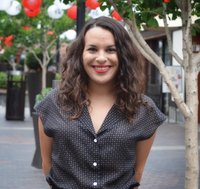Community Progress Makers (CPM) Winners Series: Building Bridges Across the River

In the past two decades, the neighborhoods east of the Anacostia River in Washington D.C. have experienced a steady decline. While the west side of Anacostia River has seen growth from an infusion of commercial development, the east side community still struggles to attract investors, and contains only half of the other traditional commercial entities (businesses, nonprofits, government agencies, etc.) seen in other districts. Lower-income residents have also suffered from increased displacement, spurred by the selective uptick in business activity from the surrounding boroughs.
In an attempt to reverse these trends, Harriet Tregoning, a former Director of the DC Office of Planning partnered with Scott Kratz, a longtime D.C. resident and community volunteer, to form Building Bridges Across the River (BBARC), and repurpose unused remnants of old bridges that connect the east and west sides of the Anacostia River. The plan at first glance seems simple: it will build a park that will provide much-needed health, recreational, and counseling services. But this park, like BBARC's previous Town Hall Education Arts Recreation Campus (THEARC), is not just meant to be a crutch for its poorer residents. It will also contain an environmental education center, amphitheater, kayak / canoe launch, community garden, arts spaces, and computer centers, to name a few.

Other aspects of the project branch out to the surrounding community as well. To combat gentrification and preserve affordability of the homes in the area, BBARC also engaged in payment assistance, lending $10,000 to several different at-risk families. The organization is also working with the nonprofit City First Homes to establish community land trusts — which will allow the majority of residents (who are mostly renters) to keep the homes they already have — as well as a homebuyer’s club-financial literacy program package, which will encourage residents to invest in long-term savings. Such features speak of a more optimistic future, a higher aspiration towards community empowerment and self-propelled individual advancement.
From the start, the 11th Street Bridge Park has never denied its inherent ambition. Its scope is one that demands a high quantity — and even higher quality — of investment. Fortunately, since its inception, the project has managed to accrue an impressive list of donors; in fact, its sheer audacity is only matched by the diversity of its partners, who range from the National Park Service to JPMorgan Chase. By canvassing a wide variety of funders, as well as working closely with community members to tailor the project’s objectives to community needs, the 11th Street Bridge Park promises to be a game-changing social landmark for east Anacostia, and a beacon of solid financial growth for the region.
The inclusive spirit of enhanced collaboration is a strategy championed by LISC LA as well. A common problem for community work in any city is the difficulty of establishing common goals. Wires get crossed as businesses, nonprofits, and local leaders struggle to agree on the conception, implementation, and desired effects of certain projects. Here at LISC LA, we focus on joining the forces of all available industry, business, and community sources to produce meaningful results, all the while making the benefit of the community a central priority. Such a philosophy is the guiding principle behind all our work, and we are excited to see the same mindset in our fellow nonprofits working in Washington D.C. and around the country.
The Community Progress Makers fund is a $20 million, two-year initiative by the Citi Foundation to support high-impact community organizations that are driving economic opportunities in their communities.
